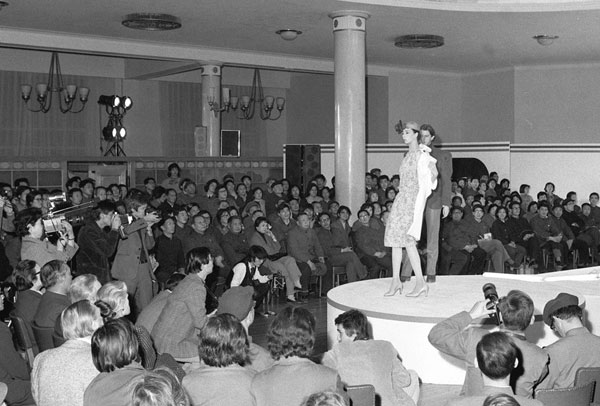|
Market role reiterated
"It's the most significant reform plan since China kicked off comprehensive reform 35 years ago," said Xie Gaomin, director of the Institute of Economic System and Management under the National Development and Reform Commission.
"The document clearly states that the market and not the government should be the foundation of economic development. Also, because reform of China's modern system of governance and the economy are closely linked, the work must be synchronized or the economy will not develop as wished," he said.
 |
|
The farmers of Xiaogang village in Fengyang county, Anhui province, were pioneers of rural land reform. Eighteen farmers signed a secret agreement to divide the land of the local People's Commune into family plots. The black and white photo (inset) was taken 35 years ago at one of the plots. [Photo/Xinhua]
|
In addition to acknowledging the market's all-important role in resource allocation - as signaled by its upgrading from "fundamental" to "decisive" - and picking out many economic and financial reforms, the Nov 9 to 12 plenum introduced a raft of reforms, from the abolition of the laojiao system, otherwise known as "re-education through labor", to increasing judicial independence.
"China has developed so quickly, and it's hard to avoid some problems. It (the new reform plan) can be seen as a remedy for reforms that were not attempted in the past or as recognition that not enough attention was paid to certain issues. It lays the groundwork for further and broader reforms," said Zhen Xiaoying, former vice-president of the Central Institute of Socialism.
 |
|
Beijing's first fashion show, held in 1979, featured the work of the French designer Pierre Cardin.
|
"For a long time, the international community acknowledged our economic growth, but they had doubts over the so-called China model. I think this plenum marks a movement toward a system the outside world will better understand," she said. "Hopefully, it will be a more comprehensive and mature system by 2020, the timeline set for the reforms to take effect."
Hu Xingdou, a political analyst with the Beijing Institute of Technology, said he was pleased that the plenum document signaled the reform of many sensitive issues China has faced during the past three decades.
 |
|
This 1993 photo shows Tibetan women singing at a karaoke party in Shannan prefecture in the Tibet autonomous region.
|
"The majority of the decisions made at the plenum have lived up to my expectations, especially the abolition of the laojiao system," he said.
A dedicated observer of the country's social problems, Hu argued that many problems were rooted in a failure of the rule of law.
"In my opinion, its abolition (re-education through labor) is a line of demarcation. The crossing of that line means the government is serious about China becoming a society that operates through the rule of law. While the 1978 meeting opened a new era for development through the adoption of a market economy, the latest plenum opened a new era of reform with dual goals; that of establishing an economy based on both the market and the rule of law," he said.
|